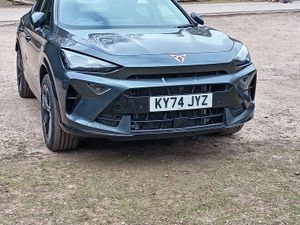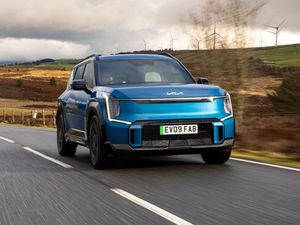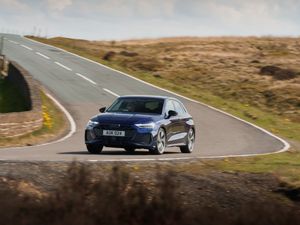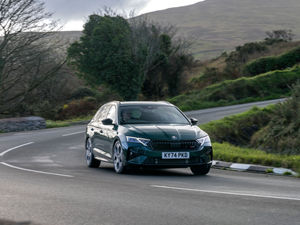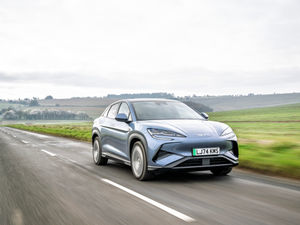Mini's John Cooper Works Challenge takes the racetrack to the road
The Mini John Cooper Works Challenge is the most track-focused car the brand makes. Is it too hard for the road though? Jack Evans finds out

What is it?
Those that want a Mini that is slightly faster than normal are usually well catered for with the likes of the Cooper S, Cooper SD and John Cooper Works range of cars. However, if you want something a little rarer – as well as with some track-focused tuning – then there’s another option in the form of the John Cooper Works Challenge. Stripped back, harder and lighter than other cars in the range, it’s as pure a driving experience as you’ll get from any Mini car.

This experience does come at a price – just over £30,000 in fact – but for those who want a truly special Mini, then this is the best place to go.
What’s new?
On the face of it, this could be pretty much any ‘hot’ Mini. There are go-faster stripes, a large splitter at the front and a larger diffuser at the rear. However, look closer and you’ll notice a set of spotlights, a range of model-specific stickers and, at the back of the car, a rather menacing-looking carbon-fibre tipped exhaust.

You also get adjustable springs and dampers, allowing for a more road or race-honed setup. A Quaife limited-slip differential has also been fitted, giving better cornering abilities.
What’s under the bonnet?
Powering the JCW Challenge is the same 228bhp, 2.0-litre turbocharged petrol that you’ll find in the standard JCW.

It’s a wonderfully flexible engine, with plenty enough pull when you want it thanks to the 320Nm of torque available. Power is sent to the front wheels via a six-speed manual gearbox and, because of the stickier tyres fitted to this car, it’s likely that it takes a little less to hit 60mph than the claimed time of 6.1 seconds.
What’s it like to drive?
The Challenge is pretty darn exciting to drive, in all honesty. It clings on through the bends with a keenness that manages to surpass the standard JCW’s – and that takes some doing. The better tyres, larger brakes and differential all work together to provide a really precise driving experience, without making it devoid of that characteristically Mini ‘fun’. On track, we already know that the Challenge is an absolute hoot.

However, out on the public road the experience, though exciting, is tarnished somewhat. Make no bones about it, the Challenge is a bit of a giggle to whisk through country roads, attacking each corner with more and more enthusiasm and welcoming its ability to eat each and every bend up. However, those new springs and dampers are incredibly firm, and this means that the Challenge loses some of the suppleness that you find in the standard JCW – in itself an already stiff car.
On the open road, this means that the Challenge can be quite tiring to drive, as well as incredibly jostling when driving around town. The Sports exhaust can be switched between road and track modes – the former keeping the exhaust flaps closed and the latter opening them up. When set to Track mode, the effect is instantly noticeable – the Mini starts sounds almost demonic, crackling and popping on the overrun. Of course, this is designed to be used on the circuit only.
How does it look?
In truth, the John Cooper Works Challenge looks pretty much the same as a standard JCW. There’s a lower splitter, a large rear diffuser and a tasteful boot spoiler – but you’ll find all of these features on the normal JCW.

However, you can notice the lower ride height, black alloy wheels and red brake calipers – and these differences are just different enough to give the Challenge a subtle change in appearance over the car it is based upon.
What’s it like inside?
The interior is pretty stripped back in Mini terms. Gone is the large, wide central infotainment screen in favour of a simple digital display. You still get air conditioning, but there’s really not a lot to look at inside the car. It’s designed to be as minimalist as possible however, at £32,000, you get the feeling that a lot of owners would expect a little more in terms of standard equipment.

That said, it’s not that the Mini doesn’t feel special. The large, heavily bolstered bucket seats provide a huge amount of support and, as is typical of a Mini, the driving position is pretty much spot-on.
What’s the spec like?
In truth, there’s not a vast amount of standard equipment on offer with the Challenge. You still get adaptive LED headlights, cruise control and rear parking sensors, but once sat inside the Challenge feels pretty bare bones. Everything is well put together and trimmed in high-quality materials, though, giving the Challenge a relatively premium air.

A multifunction steering wheel gives easy access to audio and mobile phone functions though, interestingly, there’s no way of playing media through the car’s system when connected via Bluetooth – your smartphone needs to be physically attached by a USB cable.
Verdict
The Mini John Cooper Works Challenge is a huge amount of fun. On track, we know that it’s near-electric to drive, offering plenty of grip and bags of performance too. However, on the road, it just feels a little too firm and, when it boils down to it, leaves you wanting the suppleness and slightly softer spring rate that you find in other cars – namely the standard John Cooper Works. That said, the limited-run nature of the Challenge will no doubt appeal to those who want a JCW that is just a little bit different.
FACTS AS A GLANCE
Model: Mini John Cooper Works Challenge
Base price: £32,000
Price as tested: £32,000
Engine tested:
Power (bhp):
Torque (Nm):
Max speed (mph):
0-60mph: seconds
Economy: mpg
Emissions (g/km):

